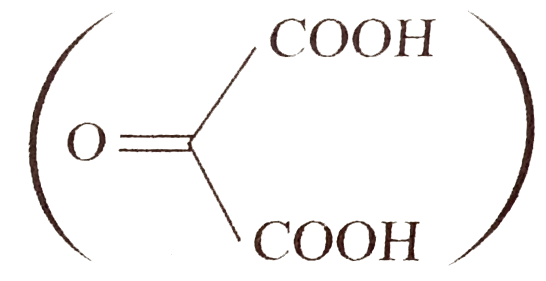A solution of acetone in ethnol
Shows a negative deviation for Raoult's law
Shows a positive deviation from Raoult's law
Behaves like a near ideal solution
Obeys Raoult's law
The correct Answer is:B
To solve the question regarding the behavior of a solution of acetone in ethanol in relation to Raoult's law, we can follow these steps:
Step 1: Understand Raoult's Law
Raoult's law states that the vapor pressure of a solution is directly proportional to the mole fraction of the solvent in the solution. The formula can be expressed as:
P=P0A⋅XA+P0B⋅XB
where:
- P is the vapor pressure of the solution,
- P0A and P0B are the vapor pressures of the pure components A and B,
- XA and XB are the mole fractions of components A and B in the solution.
Step 2: Identify the Components
In this case, the components are:
- A = Acetone (C3H6O)
- B = Ethanol (C2H5OH)
Both acetone and ethanol are polar solvents.
Step 3: Determine the Nature of the Solution
Since both acetone and ethanol are polar, they are expected to mix well. However, the interaction between the molecules of acetone and ethanol may differ from the interactions between the molecules of the pure substances.
Step 4: Analyze Deviations from Raoult's Law
- Positive Deviation: This occurs when the vapor pressure of the solution is higher than what Raoult's law predicts. This typically happens when the intermolecular forces between different components are weaker than those in the pure components.
- Negative Deviation: This occurs when the vapor pressure of the solution is lower than predicted by Raoult's law, often due to stronger intermolecular forces in the mixture.
Step 5: Conclusion
In the case of a solution of acetone in ethanol, the interactions between acetone and ethanol are weaker than the interactions in the pure substances. Therefore, the solution exhibits a positive deviation from Raoult's law.
Final Answer
The solution of acetone in ethanol shows positive deviation from Raoult's law.
---
Raoult's law states that the vapor pressure of a solution is directly proportional to the mole fraction of the solvent in the solution. The formula can be expressed as:
P=P0A⋅XA+P0B⋅XB
where:
- P is the vapor pressure of the solution,
- P0A and P0B are the vapor pressures of the pure components A and B,
- XA and XB are the mole fractions of components A and B in the solution.
In this case, the components are:
- A = Acetone (C3H6O)
- B = Ethanol (C2H5OH)
Since both acetone and ethanol are polar, they are expected to mix well. However, the interaction between the molecules of acetone and ethanol may differ from the interactions between the molecules of the pure substances.
- Positive Deviation: This occurs when the vapor pressure of the solution is higher than what Raoult's law predicts. This typically happens when the intermolecular forces between different components are weaker than those in the pure components.
- Negative Deviation: This occurs when the vapor pressure of the solution is lower than predicted by Raoult's law, often due to stronger intermolecular forces in the mixture.
In the case of a solution of acetone in ethanol, the interactions between acetone and ethanol are weaker than the interactions in the pure substances. Therefore, the solution exhibits a positive deviation from Raoult's law.
The solution of acetone in ethanol shows positive deviation from Raoult's law.
Similar Questions
A solution of acetone in water show negative deviation from Raoult’s law, Which of the following statement regarding this solution is incorrect ?
View SolutionThe Henry's law constant for a solution of acetone in chloroform is 0.2 bar when the solution is at 308 K. Calculate the value of vapour pressure of acetone when its mole fraction is 0.14.
View SolutionWhat type of azeotropic mixture will be formed by a solution of acetone and chaloroform ? Justify on the bassis of strenght of intermolecular interactions that develop in the solution.
View SolutionUpon mixing of acetone and ethanol, which of the following is not observed?
View SolutionAt 35∘C , the vapour pressure of CS2 is 512 mm Hg and that of acetone is 344 mm Hg . A solution of CS2 in acetone has a total vopour pressure of 600 mm Hg. The false statement amongst the following is
View SolutionAn aqueous solution of acetone, CH3COCH3 is 10.00% acetone by weight. What is the mole percentage of acetone in this solution:
View SolutionAt 35∘C, the vapour pressure of is and that of acetone is . A solution of CS2 in acetone has a total vapour pressure of . The false statement amongst the following is:
View SolutionCompound (A)(C12H16) on oxidation with acidic KMnO4 solution gives acetone and
 . Identify compound (A).
. Identify compound (A).
View SolutionA mixture of acetone and methanol can be separated by
View SolutionPredict the product of reaction of
acetone with Tollen's reagent.
View Solution
